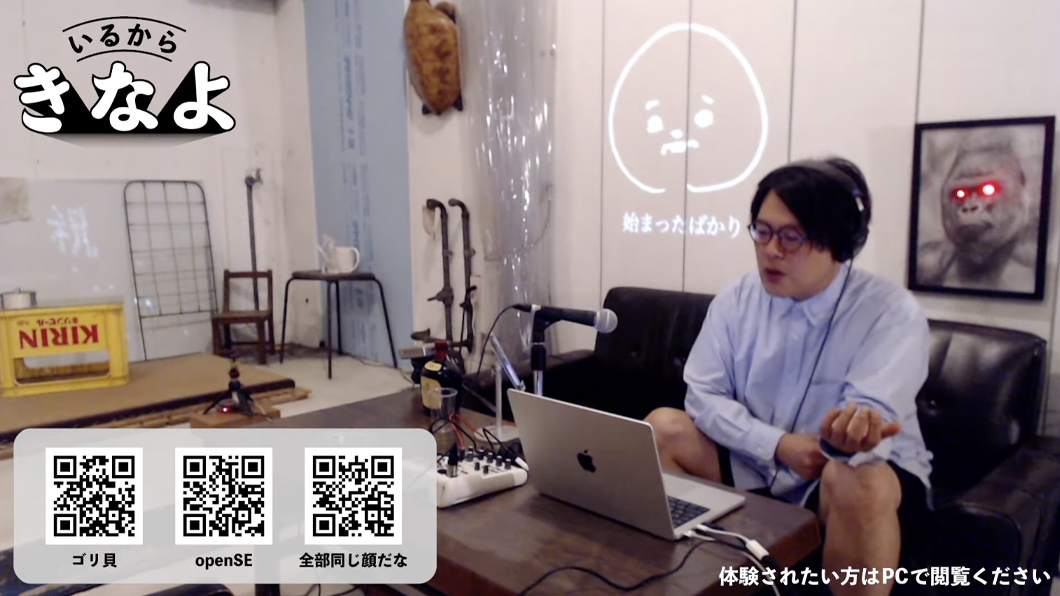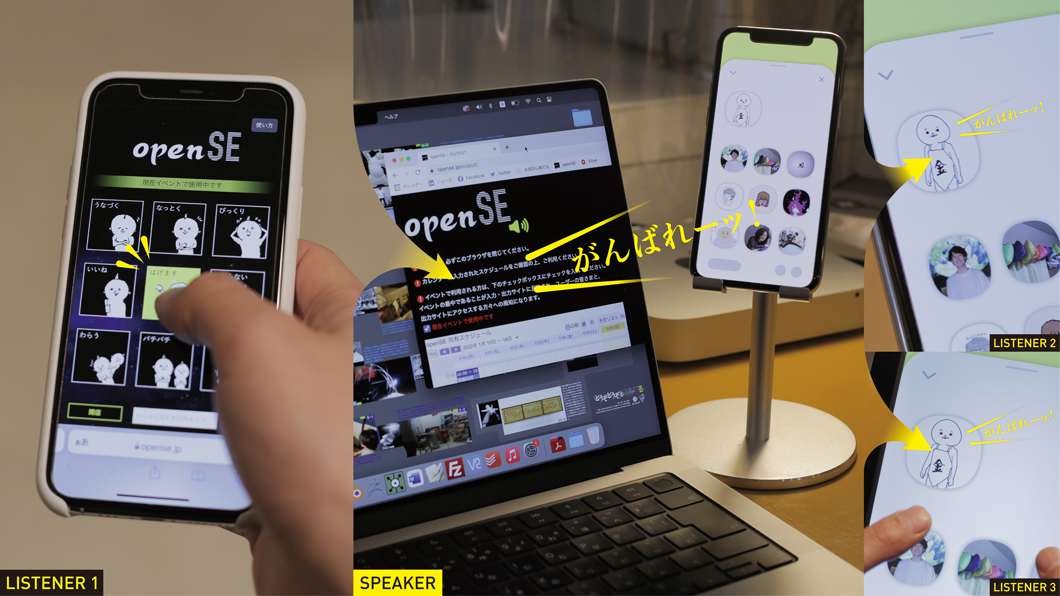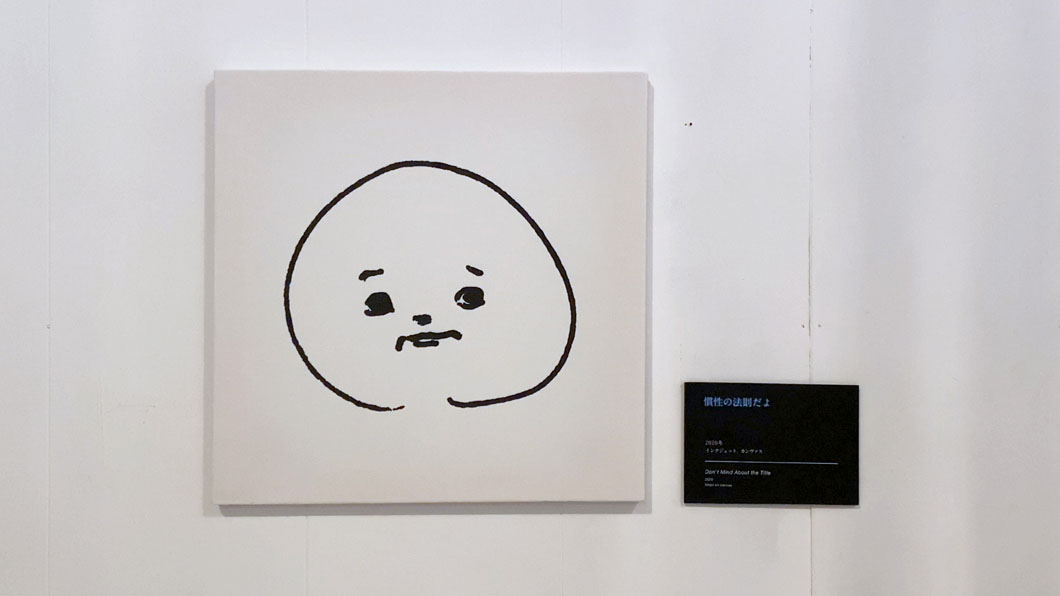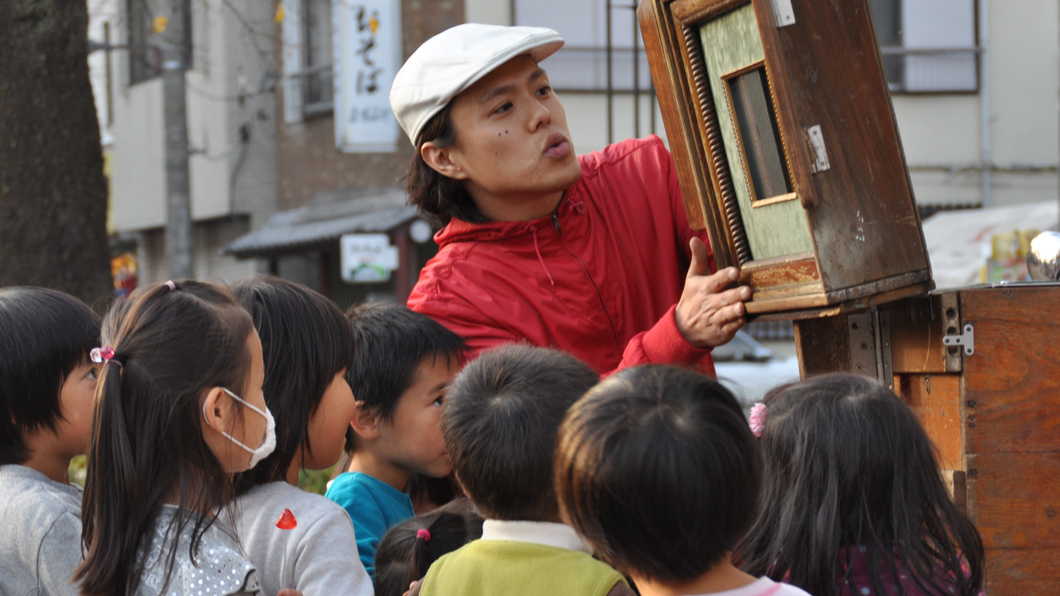
A series of four works that encourage exhibition and collaborative experiences over the internet, deployed via YouTube Live and held in a one-hour solo exhibition. Specifically, ‘Gorigai’, ‘Alive’, ‘openSE’ and ‘All the same face’ were exhibited, with participants committing themselves over the internet, which was facilitated by the artists themselves.
[more]

With the advent of the Corona disaster, online communication such as video calling and voice SNS has become more active. In such a situation, communication in online classes and talk delivery is divided into a speaker and a listener, and the interaction between the two is mainly through text such as chat. This work was created to increase the amount of traffic that the listener can interfere with the speaker under these circumstances, and to realize communication that is neither 0 nor 100.
Specifically, I built a web application that allows listeners to send their reactions and arbitrary words, and share these sound sources output from the speaker’s side with everyone through microphones and mixers. By constructing the input and output in a web browser, there is no need to install any kind of application, which is a feature that enhances accessibility.
In fact, when the application was introduced to university lectures, various talk transmissions, online workshops, etc., the users felt as if they were creating the distribution space together. This is thought to be a sense of presence created by the rapid stimulation of voice, a medium that differs from visual information processing such as language and stamps. In addition, voice has a high degree of intervention in the space and the speaker is forced to react, which creates a sense of satisfaction in the listener and encourages further interaction. Such characteristics have led to a reversal of the initiative from the broadcaster to the listener in the introduction of radio broadcasting.
Unlike “assertions” using symbols, such as chat and stamps, “openSE” provides “reactions” using voice, creating a space of mutual influence. In other words, it is a framework that creates a “collaborative experience” in virtual spaces.
[more]

This work is a system whereby the artist prints a doodle of a face he has suddenly drawn on canvas, and visitors can anonymously post the title of the caption of the work from their own smartphones. The base is the website “It’s all the same face” ( https://onaji.org/ ), which is a site for posting interpretations of faces, and the latest postings are reflected in the caption each time. The interpretation of each viewer, which is updated and shared at will, becomes the official work title of the face, placing the artist and the viewer on the same layer, while the viewers also interact with each other, and everyone committed to the work forms a complicity relationship.
YouTube
[more]

Paper Slide Show is known as Kamishibai abroad because of its unique Japanese culture. Such Kamishibai paintings are hand-painted one-of-a-kind, and most of them have unknown rights. So secondary use is difficult. Meanwhile, I distributed the work of Koji Kata, known for his “Golden Bat”, free of charge as a “useful archive” where anyone can play Kamishibai anytime with an iPad.
YouTube
Award
Yahoo! Japan Internet Creative Award 2013
Nominated
[more]

A web application dedicated to an improvised Street Kamishibai that acquires images of children’s photos taken on the spot and images that the audience likes by using the image search API, and inserts them into templates to flexibly add traditional narratives. The concept was “a device that allows everyone to enjoy personal things using the Internet.” The image display algorithm was randomized to incorporate happenings.
YouTube / Article
Award
15th Japan Media Art Festival
Entertainment Division, Jury Selection
Exhibitions
15th Japan Media Art Festival
and others
[more]





